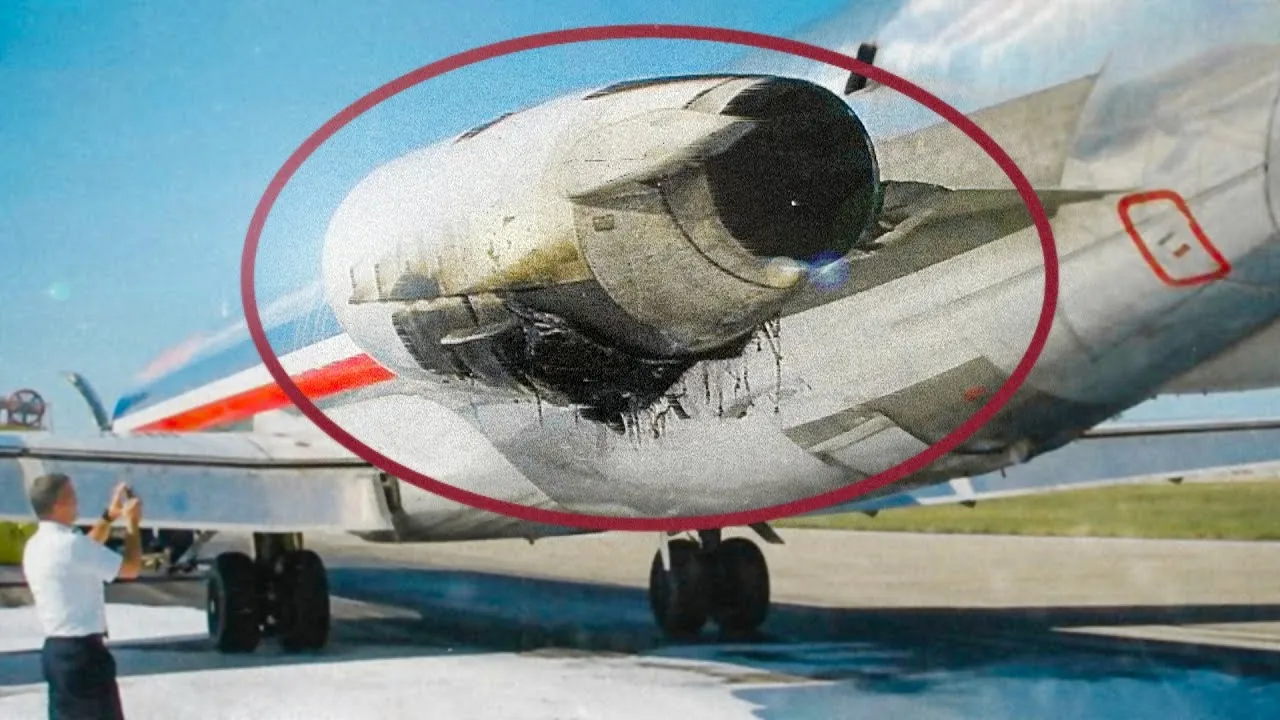
On the evening of November 5, 1997, what was meant to be a routine transatlantic journey turned into one of the most extraordinary survival stories in aviation history. Virgin Atlantic Flight 24, a four-year-old Airbus A340-300, prepared to take off from Los Angeles International Airport with 98 passengers and 13 crew members on board, bound for London Heathrow.
At the controls was the seasoned Captain Tim Barnby, with more than 14,000 flying hours, alongside First Officer Andrew Morley and relief pilot Craig Maton, both newer to the A340 but experienced aviators nonetheless. None of them knew that within hours, they would be tasked with landing a crippled widebody jet—one missing part of its landing gear—on one of the world’s busiest runways.
Flight 24 lifted off from Runway 24 Left shortly before 9:00 PM. As the plane climbed out over the Pacific Ocean, a critical mechanical failure occurred—unknown to the crew or the passengers. A torque pin in the left main landing gear assembly had broken loose and fell from the aircraft, landing near the airport perimeter.
Although the gear retraction was slightly slower than usual, no alarms were raised, and the aircraft continued its 10.5-hour journey over the continent and the Atlantic. The autopilot was engaged, the cabin crew served meals, and most passengers settled into sleep as the plane cruised peacefully through the night sky.
Trouble began to surface only as the aircraft neared its destination. During a routine systems check, the pilots noticed that one of the brake temperature sensors showed no signal.
On an aircraft like the A340, a lone sensor failure isn’t inherently alarming. Yet this anomaly was merely the tip of a much deeper issue. It wasn't until the crew began their descent into Heathrow that the true danger became clear.
As First Officer Morley lowered the landing gear on final approach, the right main gear and nose gear extended normally. But the left main gear didn’t budge. The cockpit lit up with a “gear unsafe” warning. The aircraft was now flying with only two of its three landing gears deployed.
A landing attempt in that state could cause the plane to tilt, break apart, or even slam into terminal buildings. Hoping it was a delay, the pilots continued their descent. But when no improvement occurred, they initiated a missed approach and climbed to a holding pattern.

Now at 8,000 feet above Bovingdon, the crew began troubleshooting. They tried the standard gravity extension procedure, designed to let the gear drop by its own weight in case of hydraulic failure—but nothing changed.
The left gear remained stuck. Virgin Atlantic’s operations center, located just miles away at Heathrow, joined the effort. Engineers advised resetting circuit breakers and repeating manual procedures. Still, the gear failed to deploy. Flight 24 was now circling London, with one hour of fuel left and a landing gear jammed in a dangerously ambiguous position.
The crew needed a visual assessment. Air Traffic Control approved a rare request: a low-altitude flyby directly over Heathrow’s control tower.
With the massive jet skimming just 300 feet above ground, an engineer peered from the tower and confirmed the worst—the left gear was partially extended, hanging limply. It wasn’t up or down. It was simply stuck.
Suggestions became increasingly unorthodox. The fleet manager proposed touching down gently on the right gear to jolt the left gear into place. But this carried enormous risk—too soft, and it wouldn’t work; too hard, and the functioning gear could collapse.
Another idea followed: a sharp turn with steep bank angles to use g-forces in flight. Captain Barnby tried it, rolling the plane up to 50 degrees. Passengers, unaware of the maneuver, were pushed into their seats under 1.5 times their normal weight. But even gravity, it seemed, couldn’t help.
As the aircraft continued burning fuel, a decision had to be made. With barely 45 minutes of flying time left, the captain chose not to divert to Manston military base, as suggested by Heathrow’s operations manager.
Instead, he committed to landing at Heathrow—on one of the world’s busiest runways, surrounded by terminal buildings, filled with hundreds of innocent lives.

What followed was a masterclass in coordination and courage. Emergency services at Heathrow mobilized. Runways and taxiways were cleared. Airspace was locked down. In the cockpit, a final plan took shape.
The aircraft would land on Runway 27 Left, chosen because a loss of control would steer the plane away from terminal buildings. To give themselves more runway width, they would aim for the extreme right side of the runway.
The plan was intricate: touchdown would occur on the right gear. Engines 1 and 4—those on the outer wings—would be shut down immediately to reduce fire risk.
Engines 2 and 3 would remain active to preserve hydraulic control. As the speed dropped and the left wing inevitably sagged, those engines would be shut down in sequence. It was a dance between control and chaos, fire and survivability.
At just after 4 PM local time, with passengers in brace positions and nerves frayed, Virgin Atlantic Flight 24 touched down on its single good gear. Sparks flew as engine 4 scraped the runway.
Then came the inevitable: the left wing dipped, and the remaining engines began grinding the tarmac. The captain used rudder inputs and remaining thrust to fight against the aircraft's deadly lean. Tires exploded. The jet veered and groaned. But eventually—it stopped. Fully. On the ground. Everyone alive.
Within three minutes, all 114 people were evacuated without injury. There were no fires, no deaths, no chaos. Just stunned silence and then overwhelming relief. The aviation world was in awe.
In the aftermath, investigators traced the cause to the torque pin that had broken loose shortly after takeoff in Los Angeles. Airbus engineers concluded that the component had been subject to unexpected loads.

The landing gear assembly was subsequently redesigned. More importantly, Airbus adopted Captain Barnby’s landing method—including staggered engine shutdowns and steep-bank attempts—as official procedure in similar emergencies. The crew's ability to innovate, coordinate, and maintain composure under immense pressure turned a near-certain disaster into a textbook emergency landing.
Flight 24 now lives on in aviation manuals, training simulators, and safety lectures—not as a tragedy, but as an example of how human ingenuity, experience, and teamwork can overcome mechanical failure. It is a story not just of malfunction, but of mastery.

-1750068259-q80.webp)

